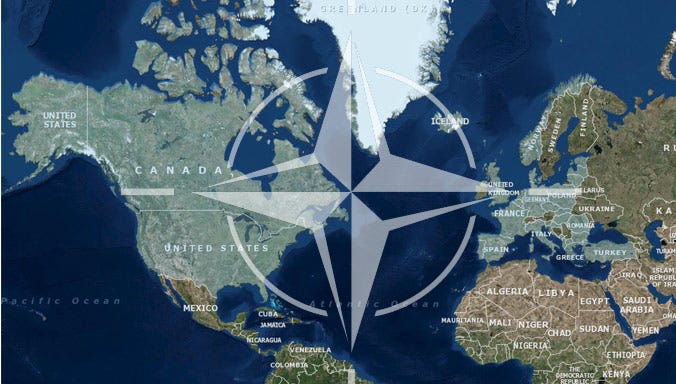
NATO leaders are meeting in Brussels today and I suspect they have some heavy lifting to do. Here’s what I’m looking for from the military alliance.
1 – No No-Fly Zone
Ukrainian president Volodymyr Zelensky will ask again for a NATO-imposed “No-Fly Zone” over Ukraine. NATO will again refuse. They must. There’s no way around the fact a NATO-imposed NFZ over Ukraine would be a de facto declaration of war against Russia. NATO’s mandate is peace through deterrence – not starting wars.
Instead, I expect NATO to make more commitments to provide weapons, equipment and other materiel to Ukraine through innovative means. They may authorize the transfer of some of Poland’s Russian-made fighter planes to Ukraine – planes that Ukrainian pilots are already qualified on.
2 – Where’s the Red Line on nukes and chemical weapons?
As the war goes poorly for Russian president Vladimir Putin, his vision of a resurgent “Russian Empire,” has become impossible. Cornered animals are extremely dangerous and unless Putin sees a graceful exit path from the conflict, he may well look to make one. Less gracefully.
Putin has about 2,000 “tactical” nuclear weapons that can be delivered by missiles, bombs, artillery shells, tank shells or even in suitcases. These are not the city-busting mega bombs we’re used to thinking about from the Cold War. These tactical weapons have yields as small as 0.3 kilotons (equivalent to 300 tons of TNT) which could destroy the airfield at Toronto’s island airport without destroying the city’s financial core less than a kilometre away. The blast would destroy the airfield and radiation might render it irreparable for generations. Residents in waterfront condos may be fatally irradiated, but damage would be very geographically limited. But, it’s not a Doctor Strangelove global conflagration scenario.
Russia may also resort to chemical weapons to winkle out Ukrainian defenders from the ruins, bunkers and trenches of the cities it is struggling to seize. Although Russia has a full range of nerve agents, it is more likely to follow lessons it learned in Syria. Old-fashioned (First World War style) chlorine gas is cheap and easy to make and, because it’s heavier than air, it was used repeatedly in Syria against enemy hiding in cities. It creeps along the ground and floods basements, underground bunkers and trench systems where enemy soldiers may be hiding, choking, disabling or killing them. It clears quickly and attackers can sweep up what little resistance remains.
NATO’s question is simple: where’s the “red line” on the use of these weapons? Would a small tactical nuke used to destroy a Ukrainian airbase or seaport be enough to trigger a NATO strategic thermonuclear response? Or, would NATO use small nukes against Russian airbases launching strikes into Ukraine? Or, would NATO not respond at all – in order to avoid being dragged into a global war?
Likewise, what response would NATO have to illegal use of chemical weapons such as chlorine?
3 – Forward deployment to frontline states
Ukraine is a friendly state, but not a member state of NATO. As a defensive alliance, NATO has no mandate to protect non-members, nor was it created to start wars with other nations, even Russia. But, where is NATO’s “line in the sand?”
Clearly, that line must be the border of NATO’s frontline states: including those members Estonia, Latvia, Lithuania and Poland that abut Russia, Belarus or Ukraine. NATO must make it abundantly clear that no transgression on NATO territory will be permitted.
To send that signal to a Putin who values actions more than words, it’s important for NATO to deploy more troops and aircraft to Eastern Europe where they can respond to and counter-attack against any Russian incursion. How many troops? How many aircraft? Where? How close to the front line? NATO needs to make these decisions now.
4 – Permanent deployments in Eastern Europe
Today, there are about 1,000 Canadian soldiers deployed to Latvia. They’re there on six-month rotations which is expensive and exhausting for all involved. During the Cold War, Canada and other western NATO members had troops permanently deployed in bases on West German territory – there to immediately respond to an attack by the Soviet Union and Warsaw Pact.
It may be time to revert to that strategy. Build a permanent base in Latvia for Canadian Forces and post soldiers – and their families – there for two to four years at a time.
Are NATO member states ready to welcome alliance bases on their territory? Are member states (Canada, USA, UK, France, etc.) willing to permanently deploy their forces overseas?
5 – Ending the free ride for members like Canada
Finally, it’s time for NATO to finally crack the whip on countries like Canada that are riding NATO’s coattails. We get the benefit of collective defence, but we’re not investing in our own defence as much as we expect other members of the alliance to do for us. That’s simply bad manners.
Even Germany, which historically has invested about as little as Canada on defence – less than 1.5% of its GDP, this month raised its defence spending to the consensus baseline of 2%. Canada and other laggard nations must do the same.
If we (and the others) don’t, it should be made crystal clear that “second tier” NATO nations don’t get the full benefits of NATO membership.



